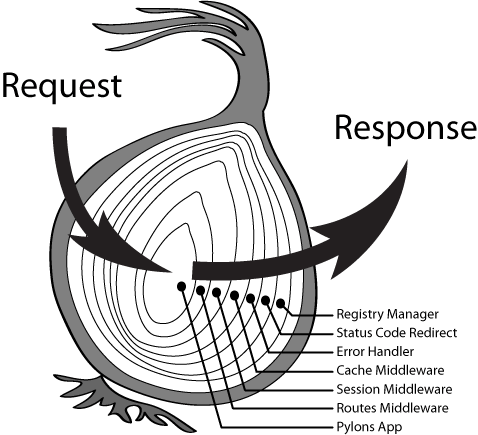理解 async/await 的执行
这是一篇简单的短文章,方便理解。
开局先丢官宣:sec-async-function-definitions 这个链接是对 await 的解释,解释了它的执行。
await 的执行意味着(官宣巴拉巴拉地说了14点,这里简化成2点):
1. await 以 promise 形式完成,且 await 之后的代码在 promise 被完成后以 .then 执行。
2. 遇到 await 时,将 async上下文 从上下文堆栈中移除,将上级(async之外)上下文(依次)恢复为当前执行的上下文;这步过程中需设置async上下文的评估状态,以便在恢复到执行上下文时调用 await 之后的步骤。
第2点类似的理解为 async上下文 被挂起,依次向上运行上下文堆栈中的上下文代码,完了后执行 async 函数里 await 之后的代码。
估计看的绕,用代码说话吧。
例一
console.log(1);
async function async1(){
console.log(2);
await async2();
console.log(3);
};
async function async2(){ console.log(4)};
async1();
console.log(5);
// 输出结果 1 2 4 5 3
理解一下输出结果:
第一步:输出 1;
第二步:输出 2,async1 先被调用,肯定优先于函数内的console和后面的console.log(5);
第三步:输出 4,把 await async2() 转为 promise 形式:
new Promise(resolve => {
console.log('2')
resolve();
}).then(res => {
// 抽出 await 之后的代码放到.then
console.log(3);
});
这时候先输出 2,再等 3 的输出。
但由于 3 在Promise规范里被设定为异步(划重点: ES6中属microTask ,此处直接影响低版本中对promise实现的shim ),且await表示遇到await关键字后先将这块代码的asyncContext挂起并执行上级上下文,所以先执行了5,于是...
第四步:输出 5,执行完后回到 async context,再于是...
第五步:最后输出 3。
例二
在官宣上没看到 依次向上 字样鸭,咋肥事?继续代码:
console.log(1);
function fn1(){
function fn2(){
async function async1(){
console.log(2);
await fn3();
console.log(3);
}
function fn3(){ console.log(4); }
async1();
new Promise(resolve => resolve(5)).then(res => console.log(res));
console.log(6);
}
fn2();
console.log(7);
}
fn1();
console.log(8);
// 输出结果 1 2 4 6 7 8 3 5
理解一下输出结果:
第一步:输出 1;
第二步:fn1 被执行,fn2 被执行,输出 2;
第三步:fn3 被执行,如第一例所述,输出 4;
第四步:async context 被挂起,将 fn2 上下文作为运行上下文,输出 6;
第五步:fn2 上下文处理后继续向外更新,fn1 上下文作为运行上下文,输出 7;
第六步:重复上述,输出 8;
第七步:由于 fn3 的await(promise)在 fn2 中的 new Promise 前被加入执行列队,根据先进先出的执行顺序,输出 3;
第八步:最后输出 5。
例三
如果2个 async 嵌套顺序是啥样的呢?再看代码:
console.log(1);
function fn1(){
async function fn2(){
async function async1(){
console.log(2);
await fn3();
console.log(3);
}
function fn3(){ console.log(4); }
await async1();
new Promise(resolve => resolve(5)).then(res => console.log(res));
console.log(6);
}
fn2();
console.log(7);
}
fn1();
console.log(8);
// 1 2 4 7 8 3 6 5
重复上一个理解的过程,把 await async1(); 后的代码放到最后执行,看做:
new Promise(resolve => {
// async1 里的代码
resolve();
}).then(res => {
new Promise(resolve => resolve(5)).then(res => console.log(res));
console.log(6);
});
对比以上输出结果,正确!
如果有多个或者嵌套promise,则以 await 变成promise并挂起async上下文等上级上下文执行完后恢复 和 事件的执行顺序遵循先进先出 两个规则去完成推断执行顺序。
注意
1. 在低版本浏览器中,async/await也有存在一些执行顺序的偏差(或者根本就不支持);
2. 在ES6和ES5中promise的执行也有不同点(上述提到,ES6中promise属microtask;在ES5中,暂未接触到有api直接操作microtask的,所以.then的异步是用setTimeout代替,属macrotask,导致输出有差异);关于promise也可参考上文 Promise 拆分理解和组装
3. 由于客户端环境不可控性太高,建议用于nodejs端开发。
彩蛋
通过上面的理解,再看下面的图片(这是koa middleware的... 嘿嘿嘿):

希望这篇笔记能够帮助前端袍泽们对async await的执行过程有更好的理解。上述内容仅供参考,如有理解不当的地方,还望提出!
